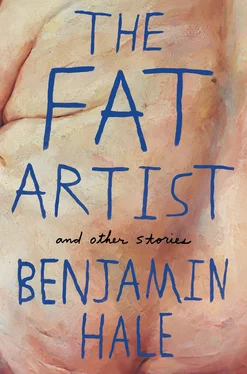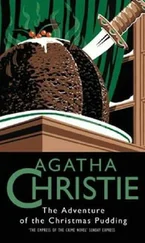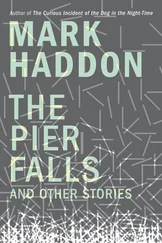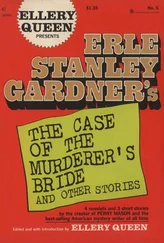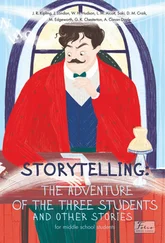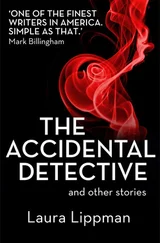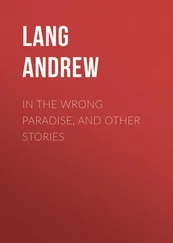But on that night, he just did a short stand-up routine before introducing Ethyl. Derek was wearing drag he’d mostly made himself: a tight leather miniskirt and a sequin-spangled silver top with long shimmering tassels swishing down his thighs, sequined pumps that matched the top, chandelier-drop earrings, and his fussily done face of makeup. His hair was his own, long and blond, teased out and gelled up with egg white, scrambled atop his head in an early-sixties Brigitte Bardot sort of thing. He was en costume , as the obnoxious professional actors he and Ethyl had dressed at the Lucille Theatre would say. After nattering a while at the audience over a jungle of hoots and whistles, he retreated to the side of the stage and very nearly forgot that he himself was part of the show — albeit an ancillary part — and not a spectator, so riveting was Ethyl’s Lucrezia.
Derek thought it appropriate that she changed her name to Ethyl, with that spelling, which reminded him of the technical suffix of a chemical: her performances were high-octane spectacles. Ethyl had begun doing these shows because he said he wanted to portray all the great ladies of the stage and history: Jocasta, Clytemnestra, Nefertiti, Medea. His Lucrezia Borgia had something to do with the infamous femme fatale of the Italian Renaissance, but even to call it a character study would be misleading: No two performances were alike, and they always involved half-improvised songs in which she accompanied herself on a big silly accordion that reminded Derek of The Lawrence Welk Show . Her repertoire was vast: song, dance, fire eating, cartwheels. Sometimes he would hire a set painter to paint the backdrop live while he performed, as he did that night.
When the show ended, the DJ put on a Chaka Khan song, “I’m Every Woman,” and like a snake shedding a skin the ambiance of the night slid from performance space to dance party. S.n.A.F.U. was a galaxy of glitter and confetti in a black room that shimmered like outer space, and was as fantastic with alien life: feather boas, leather skirts, wigs, star-shaped sunglasses, boys in ball gowns and girls in pinstripe suits, those slender Audrey Hepburn cigarette holders, the night floating ever higher on champagne and amphetamines and a tremendous lot of cocaine and whatever else was around, strobe lights blitzing, the disco ball throwing spinning multicolored points of light all around. It was nights like these that Derek would later remember as the halcyon days, that flash-in-the-pan golden age of no more than a few years in the late seventies and early eighties between punk and the plague that came, pure Fellini in Technicolor, the sex and fun and wildness without restraint, without shame.
And out of this melee there came a woman. From amid that dazzling spectrum of genderfuck and drag there came a woman, dressed in women’s clothing, floating like a ghost in Derek’s direction — gliding — for she had the primly postured gait of a woman who had once been a little girl made to cross a room with a book balanced on her head. This woman looked as out of place as a Q-tip in a Crayola box at S.n.A.F.U. She was probably about thirty-five and very Waspy. She seemed to have stepped freshly powdered out of a garden party in the Hamptons. She was short; her impeccably groomed, naturally wavy brown hair was pulled up in a tortoiseshell clip that came up to Derek’s midriff (though granted, Derek was five foot ten and in five-inch heels). She wore a starchy white blouse with puffed sleeves, pleated khaki trousers, tasseled Italian loafers, carried an Yves Saint Laurent handbag. All terribly soigné. Thin white-gold bangles trembled on her slender wrist and caught glints from the disco ball as her bony fingers rose and indicated Derek’s outfit, waving without quite pointing up and down his body, and she said, in a feathery voice scarcely audible over Chaka Khan: “I like… this .”
She came closer, and Derek suddenly felt like he was meeting someone else’s mother at a wedding. She held her hand out to him, not vertically, like a salesman about to make his elevator pitch, but horizontally, as if inviting one to kiss it. Derek took the little hand in his — this tiny, perfect hand with tiny, perfectly manicured, lightly blush-colored nails — and did not shake it so much as simply hold it for a moment, soft, cool palms brushing smoothly together. She introduced herself to him as Marianne.
They talked. Her voice was deft and quiet and her speech grammatical, softly chiming with years of education and centuries of wealth.
“I would very much like for you to come to my home to have your picture taken,” she said. Marianne spoke with a hint of that upper-class East Coast accent that was dying out it seemed even then, what used to be called the Transatlantic accent. That voice reminded Derek of Agnes Moorehead from Bewitched . (Thank God he hadn’t done Rosemary that night.) “I do portraiture, you see, and I am very interested in photographing entertainers.”
Entertainers —that was the word she used. Not drag queens, not cross-dressers, but “entertainers.” Did she use this gossamer euphemism out of timorousness or politeness? Or some other reason? — some upper-crust noblesse oblige sort of decorousness, which Derek certainly knew about but was not overly familiar with. Derek was the second-to-last of seven children from a blue-collar Irish Catholic family in Poughkeepsie. His had been a childhood of hand-me-downs, burnt steak and baked potatoes, fiercely measured portions at mealtimes. His father died of a heart attack when he was nine, and after that his sisters raised him and his mother wore a green dress and drank herself to sleep on the couch in the afternoons. One of his older sisters was a nun now, and to her, Derek was not an “entertainer,” nor even a “drag queen,” but a sinner, and to his older brothers, he was a freak, a pervert, a queer, a faggot.
A card materialized between his fingers, the apparition vanished, and the night roared into oblivion. The many points of light spun around the room and became a vortex of streaks, smooth horizontal lines of color and whiteness, flashes of fake diamonds and the orange tips of cigarettes. Even here there was a hint of money in the air, or of carelessness, at any rate. Money: the ailment and panacea of the eighties, the real drug we should have said no to. Reagan had told us we had it, and we liked to hear that. Everyone did, including drag queens in squalid basement bars on Sixth Avenue and Twenty-First Street. Derek’s memory of that night would fade around three or four in the morning and come back to him when Sunday’s dishwater light of about noon slanting in through venetian blinds on a window in his friend Scott’s East Village apartment woke him. He was naked and looking directly at Scott’s pillow, which he had smeared with the makeup he hadn’t removed before bed. Scott was still snoring as Derek picked his things off the floor, and when he made it back to the dingy studio in Forest Hills he shared with Tom, he discovered he had miraculously retained that card. It was a stark beige rectangle of starchy, quality stock, with a name and phone number in crisp gold lettering, and an address, at the Beresford on the Upper West Side. With the card in hand, he sank a finger into a plastic hole in the rotary dial of his bedside telephone and fought back an apprehension tightening his throat that surprised him.
• • •
The Beresford, 211 Central Park West . With one hundred and seventy-five apartments, this preeminent prewar landmark is the largest of four luxury residential buildings on Central Park West designed by the notable Hungarian-American architect Emery Roth, who decorated the massive structure with then-fashionable beaux-arts and art deco flourishes of style. The Beresford stands twenty-three stories tall between Eighty-First and Eighty-Second Streets, with three separate entrances, and four copper-capped towers. The building provides sweeping layouts with ballroom-sized rooms, ten-foot ceilings, wood-burning fireplaces, and private elevator landings. Its mass is relieved by horizontal belt courses in the masonry and features detailing reminiscent of late Georgian facade work. In the late eighteenth and early nineteenth centuries, the advent of steel frames gave rise to skyscrapers, and the citizens of New York, finding themselves living increasingly in shadows, passed the 1916 Zoning Resolution, which outlawed tall buildings from blocking air and light to the streets below; this resulted in Beresford’s expansive setbacks, with fifty-foot-wide flagstone terraces overlooking Central Park. Thus, the higher-up apartments on the building’s east-facing side are among the most expensive and prestigious residences in New York City.
Читать дальше
